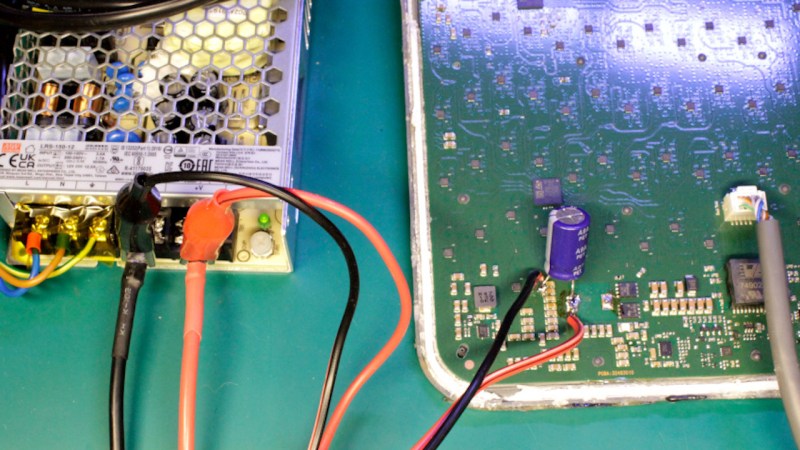Sometimes, you will want to power a device in a way it wasn’t designed for, and you might find that the device in question is way too tailored to the original power source. Today, [Oleg Kutkov] is here to give us a master class on excising unnecessary power conversion out of your devices, with the Starlink terminal as an example. This device can only be officially powered from 48V PoE, but can technically work from about 12V – and, turns out, many people want to mount a Starlink terminal to their cars.
[Oleg] shows us the power circuit of the Starlink terminal, explaining which component is responsible for what, and gives us a block diagram. Then, he shows you the 12V rail that all internal components actually draw power from, and where to feed power into it. Plus, he warns you about possible caveats, like having to disable the builtin 12V regulator to prevent it from backfeeding-induced damage. If you’re looking to modify a similar device, this tutorial gives you heaps of insight on what you might need on your foray.
Thinking to modify your own Starlink terminal, perhaps, and wondering about the power consumption? [Oleg] has current consumption graphs for you, collected with a data logger for Uni-T UT800 of his own design, providing detailed figures on just how much energy you ought to supply to power the terminal from 12V, and where to (not) get it. After all, even a seemingly suitable power supply might not do.















How many years have costumers been asking for a vehicle solution from starlink?
Right now seems that with the version 3 residential kit you can actually buy an off the shelf power supply to feed the router but the High performance kits for enterprise customers still need special 3rd party solutions.
I know people who have it on their van or RV. It’s possible. Dunno how well it works in motion, but typically you don’t pull down that kind of bandwidth until you’re parked.
I thought new Starlink terminals sold in EU are powered by USB-C since early 2023. Or perhaps he’s working on the version gifted directly from the US?
> gifted directly from the US?
Statistically unlikely. As of October 2022 there were 18k Starlink terminals in Ukraine. At the time State Department (USAID) paid for ~2K units, Poland paid for >12K units – over half of all terminals came from one relatively poor EU country :o
December 2022 number rose to 22K. Apparently as of June 2023 there are >40K terminals in use, with USAID share rising to at least ~5K.
So is the USB-C connector on the unit “Proper” USB-C?
I’ve done this “hack” using Oleg’s information and it’s worked nearly flawlessly the past 6 months. I only had 2 instances of the boot loop situation happening from slightly low voltage when it was plugged into my vehicle’s 12V socket when the vehicle wasn’t running. I’ll be remedying this with the capacitor recommendation. I’ve been using it 95% of the time in motion at speed on US interstates and it’s performed very well consistently though all weather situations. I’ve used it both in a custom roof both with magnetic feet and also primarily laying on the tray under the sunroof of my car pointed up through the glass. It’s been a game changer for working on the road. Gone are the days we have to stop 10 minutes before my wife has an on camera work call in order to set up the starlink.
It’s silly, the biggest pain point is when we’re getting fuel and there’s the overhanging roof above the pumps preventing sight of the satellites.
Hi Caleb.
I have two units that stays in this ‘boot loop’ that you mentioned.
Even if I use correct power supply, they still just boot over and over.
Is it possible to repair, or are they damaged?
They were both exposes to low 12V supply when the damage happend.
They are converter into 12V mobile units, and are Gen 2 units.
Do you have any advise for me please!!
I’ve also done this hack in the UK. It works brilliantly and can be used as a one cable solution, the latest of which I am about to test ..